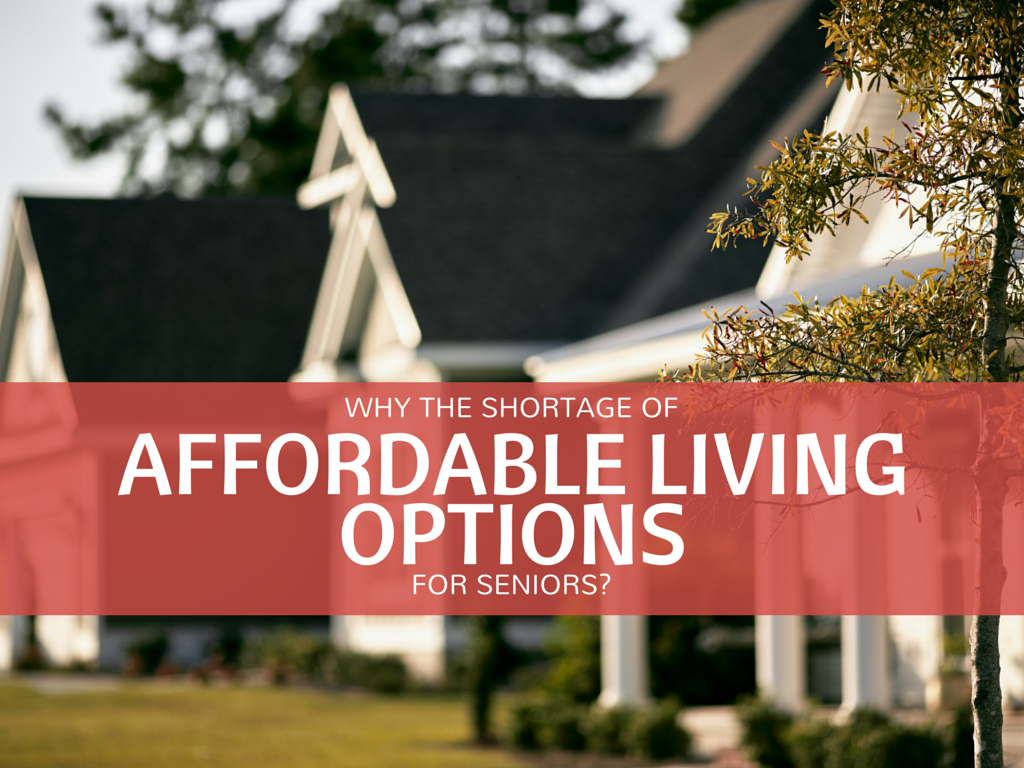
Before we dig into the lack of affordable senior living options, it may be helpful to look back on the most recent housing crisis that affected our nation.
In December 2008, the Case-Shiller home price index recorded the nation’s largest price drop in history. The cause? The lingering effects of the economic recession that began in 2007. The result of this country-wide crisis was a substantial increase in home foreclosures.
Today, we are facing another kind of crisis.
The current housing crisis may not see housing prices plummet and foreclosures skyrocket. But, for the older adults who are struggling to find safe and affordable housing, it is just as significant.
Today’s Senior Housing Crisis
For seniors, the problem is not that there are a lack of houses or apartments available. The problem, rather, is that affordable homes aren’t centrally located — near necessary transportation or services — and haven’t been designed (or retrofitted) for people with mobility issues.
With the housing market finally back on the rise after the recession, it’s become much more expensive to rent or buy a house. At the beginning of 2015, notes real estate research firm Zillow, home values were up 3.9 percent year-over-year, to $178,400. Rent is on track to rise even faster. The Zillow Rent Index rose 3.7 percent year-over-year, to $1,362, and in cities like San Francisco, rent has increased exponentially—rising nearly 15 percent.
You might think that this is a problem for anyone looking for an affordable place to live, and you’d be right, but risings costs are felt that much more severely by older adults.
The cost of renting or buying a home is increasing, but seniors’ incomes are not. Therein lies the problem. High housing costs, notes a recent report from the Joint Housing Studies of Harvard University, are forcing millions of lower income senior adults to sacrifice basic needs, like health care and food just to pay the rent.
The Cold, Hard Facts
According to the Harvard study, a third of adults aged 50 and older spend more than 30 percent of their income on housing. For those aged 80 and older, the number goes up to 37 percent. And those are just general numbers. In cities with a higher cost of living overall, like Los Angeles or New York, those percentages can be even higher.
To make things even worse, there is a scarcity of federally-subsidized rental housing. In fact, nearly two-thirds of eligible renters aged 62 and older don’t receive rental subsidies at all.
If it’s so expensive to find new housing and income is so low, why don’t seniors just stay where they are? That’s a good question, and many seniors want just that. To stay put. But, it’s just not safe—or indeed even possible—for most seniors to live in their current homes as they get older.
To be considered true senior housing, the following features should be present:
- No step entry.
- Single floor living.
- Electrical controls and switches on faucet handles and lever-style doors.
- Extra wide doorways and halls, making wheelchair and walker use possible.
Unfortunately, only 1% of current US housing units even have all of these features. So, senior housing isn’t just costly—it’s often non-existent.
Further compounding the problem is the fact that the small selection of housing that is affordable or senior friendly is often far from public transportation or other services that older adults require.
What Can Be Done?
The lack of affordable senior housing is a problem that isn’t going away anytime soon. It is estimated that, by 2030, 1 in 5 Americans will be over the age of 65. Already some organizations and legislators are leading efforts to resolve the crisis. Here in Ohio, for example, seniors are eligible for tax credits of up to $5,000 for home improvement projects that made their residences more accessible. But much more still remains to be done.
Are we up to the task?













